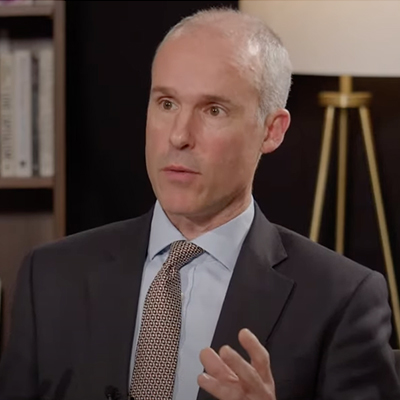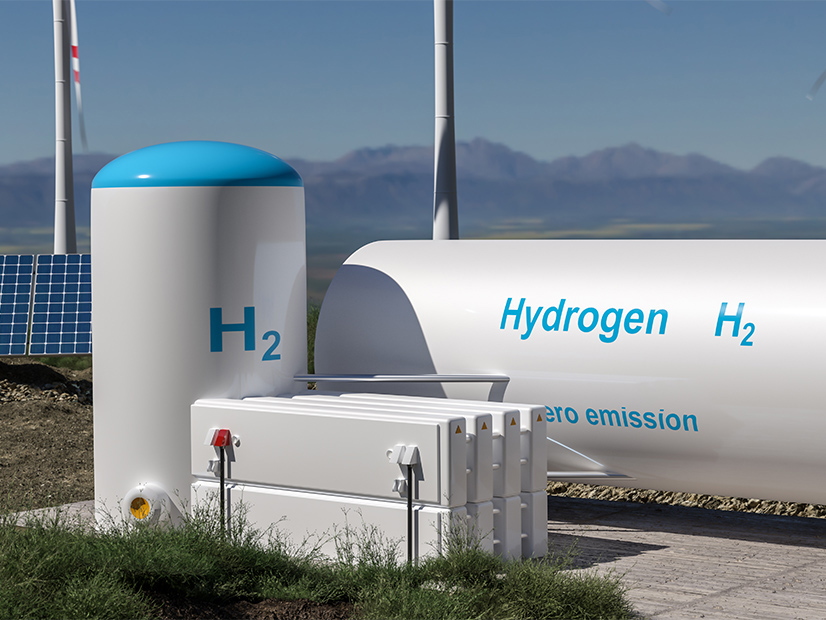The switch from natural gas to hydrogen for heating and use in heavy industry won’t be as easy to accomplish as the passage of recent legislation providing hundreds of billions of dollars to make it happen.
“Hydrogen is not a universal solution to all of our energy problems,” Steven Hamburg, chief scientist for the Environmental Defense Fund, argued during a recent webinar produced by the D.C.-based Center for Strategic and International Studies.
 Josephh Majkut, CSIS | CSIS
Josephh Majkut, CSIS | CSIS
In a dialogue with National Grid Chief Strategy and External Affairs Officer Ben Wilson, moderated by CSIS policy expert Joseph Majkut, Hamburg argued that producing hydrogen either from electrolysis or by high-temperature reforming of natural gas will itself take energy that could be used for something else.
Wilson countered that a hurried electrification of home and commercial heating would put a significant load on the electrical grid and make existing challenges much more difficult.
But Hamburg predicted that hydrogen would leak from existing gas lines at whatever percentage added to natural gas because gas lines already leak methane, which is a much larger molecule. And he argued that hydrogen, while not a greenhouse gas, “causes reactions in the atmosphere that increase the impact of other greenhouse gases.”
Current leakage rates show just how difficult it will be to run a leak-free system, Hamburg said. Data on leakage of the gas distribution system in Boston, which includes a lot of plastic pipe, shows the scope of the problem, he said.
“Boston, on average, has 4-plus percent of methane emitted just from that distribution system. … At least half of that is coming from the houses and [other] users. When you put hydrogen in the system, that number will go up.”
Fractured Understanding
Four thousand miles away, in an unrelated webinar presented by Mission Hydrogen, GmbH, an independent German producer of hydrogen-focused weekly webinars, a University of Belgrade mechanical engineering professor said that hydrogen, even when mixed at a low percentage with natural gas, will embrittle and lead to cracks in cast iron as well as modern stainless steel pipelines, especially if there is pre-existing corrosion.
 Milos Djukic, University of Belgrade | Mission Hydrogen
Milos Djukic, University of Belgrade | Mission Hydrogen“There is a serious threat of hydrogen damage and catastrophic failure, particularly for old gas pipelines, and particularly after future long-term service and transportation of hydrogen in, for example, gas pipelines with pre-existing defects on the inner side,” Milos Djukic, an expert on stress fractures, said.
“We need to implement a structural integrity model for estimation of safety of such pipelines,” he said, adding that old pipelines carrying as little as 1% hydrogen and 99% natural gas have sustained serious degradation.
“The first research started in 1892,” he said of century-long efforts to understand the effect of hydrogen on metals. “We still do not have agreement about the true hydrogen-materials interaction at various scales,” he added, referring to the debate among metallurgists about the nature of hydrogen’s interaction with metals at the microscopic level and down to the size of atoms.
Djukic said there is much research underway, especially in the U.S., to figure out the rates of stress fractures caused by hydrogen and hydrogen-induced embrittlement in pipelines and associated parts.
 David Wenger, Mission Hydrogen | Mission Hydrogen
David Wenger, Mission Hydrogen | Mission Hydrogen
“I’m a big advocate of hydrogen technology, and we must move in that direction,” Djukic told more than 2,500 viewers. “This presentation was just my effort to give some hints, but not to give a complete story of what should be done in order to bring a little bit more safety.”
European governments, especially Germany, are aiming to replace natural gas with hydrogen, leading to studies indicating that the region will soon see as many as 40,000 km of gas lines carrying hydrogen, once standards have been established, Mission Hydrogen founder David Wenger said.
“If you read such a study from the gas industry, what would you think? Is it realistic? Is more research needed? Is it safe? What’s your … [opinion] on thousands of kilometers of repurposed pipelines,” Wenger asked.
“That is the reason why in my slides I pointed out that such a comprehensive technical [and] scientific approach should be applied, and I gave some actual measures, what should be done, in order to provide safety,” Djukic replied.
A switch to hydrogen for heating is still just a discussion in the U.S., which is where EDF would like to keep it, arguing instead for conversion of home and commercial heating to air-source heat pumps.
 Steven Hamburg, EDF | CSIS
Steven Hamburg, EDF | CSIS
“If we use electricity directly, we can decarbonize many times more of that infrastructure … than we can if we just use hydrogen,” Hamburg said in the CSIS discussion.
He also said there is a serious shortage of data about hydrogen — in this case, how much hydrogen would leak out of existing systems converted from pure gas to a mixture of gas and hydrogen, or even more uncertain, pure hydrogen.
“In the absence of data right now, we’re all speculating. And if we do have higher hydrogen emission rates, it could greatly undercut the net climate benefits. It could even cause more climate warming,” Hamburg argued.
Hybrid Strategy
 Ben Wilson, National Grid | CSIS
Ben Wilson, National Grid | CSIS
Wilson said National Grid is developing a hybrid strategy to achieve decarbonization, in part because switching from gas to 100% electric heating in New York and New England, where the utility has electric customers, would strain the distribution and transmission systems and drive up prices.
“It’s got four elements,” he said of National Grid’s plan to decarbonize. “The first one is energy efficiency. We have incentive and grant programs available for our customers on that. The second one is that between now and 2050, we will progressively decarbonize 100% of the gas that we deliver through our networks, initially mostly with renewable natural gas, but then increasingly over time with green hydrogen.”
The company’s gas distribution system will see increasing volumes of renewable natural gas in this decade and, in the 2030s, increasing volumes of green hydrogen blended with the gas — up to 20% hydrogen by volume before hitting “the blend wall,” Wilson said. “Up to that level, the customer’s appliances can cope with that blend,” he said.
Higher hydrogen blends will require a change out of burner tips in home appliances, he said.
“Our strategy in the Northeast is a green hydrogen strategy, mainly because there’s no legacy gas production. There are no geologic storage facilities,” he said in reference to how utilities in other regions store gas.
“We forecast that by 2050, probably 75% of our customers will have an air-source heat pump, probably 50% of them will also still have gas heating, powered by decarbonized gas to top up because air-source heat pumps, particularly if you’ve got old legacy housing stock, will struggle when it’s really cold.”
He added that “having couple of delivery mechanisms rather than just one, we think is just a much more practical and faster and more affordable way to make the transition.”
Wilson said leakage rates, particularly in modern systems in which cast iron pipes have been replaced with plastic pipe, should be no more than 3% maximum.
“And if it’s green hydrogen produced close to the customer . . . there’s no gas gathering system. There’s no transmission with venting; it should be a much more manageable problem,” he said.
“I completely agree [with Hamburg’s concerns]. We don’t want to go from one solution to a new solution and create significant atmospheric issues,” Wilson said.


